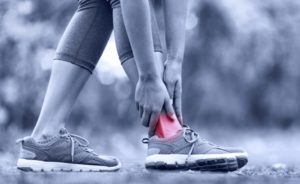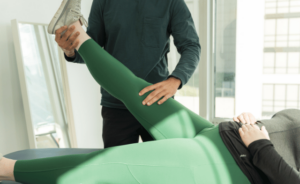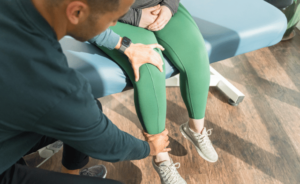Introduction
This dynamic duo not only targets the root causes of pain but also enhances overall recovery, strength, and mobility. At Vancouver Physiotherapy Hub, our physiotherapists have training in IMS and dry needling.
In this comprehensive guide, we will explore how the integration of IMS and exercise therapy can significantly improve your rehabilitation journey.
For IMS treatments, we recommend the following:
Understanding IMS and Exercise Therapy
Intramuscular Stimulation (IMS)
IMS, also known as dry needling, is a specialized form of physiotherapy that involves the insertion of fine needles into trigger points within muscles. These trigger points are areas of tension and tightness that can lead to pain, restricted movement, and muscle dysfunction. IMS stimulates a healing response in these trigger points, encouraging them to release and relax. It is particularly effective for addressing deep-seated muscle issues that may not respond to conventional physiotherapy or massage therapy.
Exercise Therapy
Exercise therapy, on the other hand, focuses on the prescription of specific exercises and movements to address musculoskeletal issues. It aims to improve strength, flexibility, balance, and overall function. Exercise therapy is often an integral part of rehabilitation programs, helping individuals regain mobility, reduce pain, and prevent future injuries.
The Synergy of IMS and Exercise Therapy
When IMS and exercise therapy are combined, they create a synergistic effect that enhances the rehabilitation process in several ways:
1. Pain Reduction and Muscle Relaxation:
- IMS effectively targets trigger points within muscles, reducing tension and pain. This reduction in pain enables individuals to engage more fully in exercise therapy without discomfort or fear of exacerbating their condition.
2. Improved Range of Motion:
- By releasing tight muscles and promoting muscle relaxation, IMS allows for greater joint mobility. This improved range of motion is essential for performing exercises correctly and effectively.
3. Enhanced Muscle Activation:
- IMS can “awaken” dormant or underactive muscles by stimulating the neuromuscular system. This increased muscle activation is crucial for effective exercise therapy, as it ensures that the right muscles are engaged during exercises.
4. Accelerated Healing:
- IMS stimulates blood flow to the targeted areas, promoting the delivery of nutrients and oxygen to muscles. This accelerated healing process helps individuals recover more quickly from injuries.
5. Muscle Re-education:
- IMS can help re-educate muscles to function correctly, especially after injuries or prolonged muscle imbalances. This re-education is a vital component of exercise therapy, as it ensures that muscles work harmoniously during movement.
6. Enhanced Exercise Performance:
- The combination of IMS and exercise therapy often results in improved exercise performance. Individuals can perform exercises with greater ease, precision, and effectiveness, leading to better outcomes.
Conditions and Scenarios Where IMS and Exercise Therapy Excel
IMS and exercise therapy can be particularly effective for a wide range of conditions and scenarios, including:
- Sports Injuries: Athletes recovering from sports-related injuries, such as muscle strains, ligament sprains, or overuse injuries, can benefit from the synergistic effects of IMS and exercise therapy.
- Chronic Pain: Individuals dealing with chronic pain conditions, including back pain, neck pain, and joint pain, can experience significant relief and improved functionality through this combination.
- Repetitive Stress Injuries: Workers or individuals experiencing repetitive stress injuries due to their occupation or activities can find relief and long-term solutions with IMS and exercise therapy.
- Post-Surgery Rehabilitation: After surgical procedures, such as joint replacements or repairs, integrating IMS and exercise therapy can enhance post-surgery rehabilitation, aiding in a quicker and more complete recovery.
- Muscle Imbalances: Individuals with muscle imbalances, which can lead to postural issues and pain, can benefit from IMS to release tension and exercise therapy to restore balance and strength.
- Neuromuscular Conditions: People with neuromuscular conditions, such as nerve compression syndromes, can find relief and improved muscle function through this approach.
Success Stories
To illustrate the power of combining IMS and exercise therapy, let’s explore a couple of success stories:
Success Story #1: Sarah’s Recovery from a Sports Injury
Sarah, an avid runner, suffered a hamstring strain during a race. The injury left her in pain and unable to run. Her physiotherapist recommended combining IMS with exercise therapy to speed up her recovery.
In the IMS sessions, trigger points in Sarah’s injured hamstring were targeted, providing immediate relief and muscle relaxation. This allowed her to engage in exercise therapy with less discomfort. The exercise therapy program focused on strengthening her hamstrings and improving her running form.
Within weeks, Sarah’s pain diminished, and her hamstring regained its strength. Thanks to the combined approach, she not only recovered from the injury but also improved her running technique, reducing the risk of future injuries.
Success Story #2: Mike’s Journey to Pain-Free Living
Mike, a desk worker, suffered from chronic back pain and poor posture due to his sedentary job. He decided to seek help from a physiotherapy clinic that offered both IMS and exercise therapy.
IMS sessions were used to target the trigger points causing Mike’s back pain. Once the pain was reduced, exercise therapy was employed to strengthen his core and postural muscles. Mike learned exercises and stretches that he could incorporate into his daily routine to maintain his improved posture.
Over time, Mike’s chronic back pain disappeared, and he developed better posture habits. He continued to perform exercises to prevent a recurrence of his pain, ultimately leading a more active and pain-free life.
How to Incorporate IMS and Exercise Therapy into Your Rehabilitation
If you’re considering the combination of IMS and exercise therapy for your rehabilitation, follow these steps:
- Consult with a Qualified Physiotherapist: Begin by scheduling a consultation with a registered physiotherapist experienced in both IMS and exercise therapy. They will assess your condition and create a personalized treatment plan.
- Commit to Regular Sessions: Consistency is key. Work with your physiotherapist to establish a treatment schedule that aligns with your rehabilitation goals.
- Communicate Openly: Maintain open communication with your physiotherapist throughout the process. Share your progress, concerns, and any changes in your condition.
- Incorporate Exercises into Your Routine: If exercise therapy is part of your plan, be diligent about performing the prescribed exercises regularly. Consistent effort is essential for lasting results.
- Monitor Your Progress: Track your progress and improvements. Celebrate your achievements and continue to work toward your rehabilitation goals.
Conclusion
The combination of Intramuscular Stimulation (IMS) and exercise therapy offers a dynamic and highly effective approach to rehabilitation. By targeting pain, releasing tension, and enhancing muscle function through IMS, individuals can achieve better outcomes in their exercise therapy programs.
Whether you’re recovering from an injury, managing chronic pain, or striving to improve your overall mobility, consider consulting a qualified physiotherapist who specializes in both IMS and exercise therapy. This integrated approach will lead to a faster, more effective recovery.






